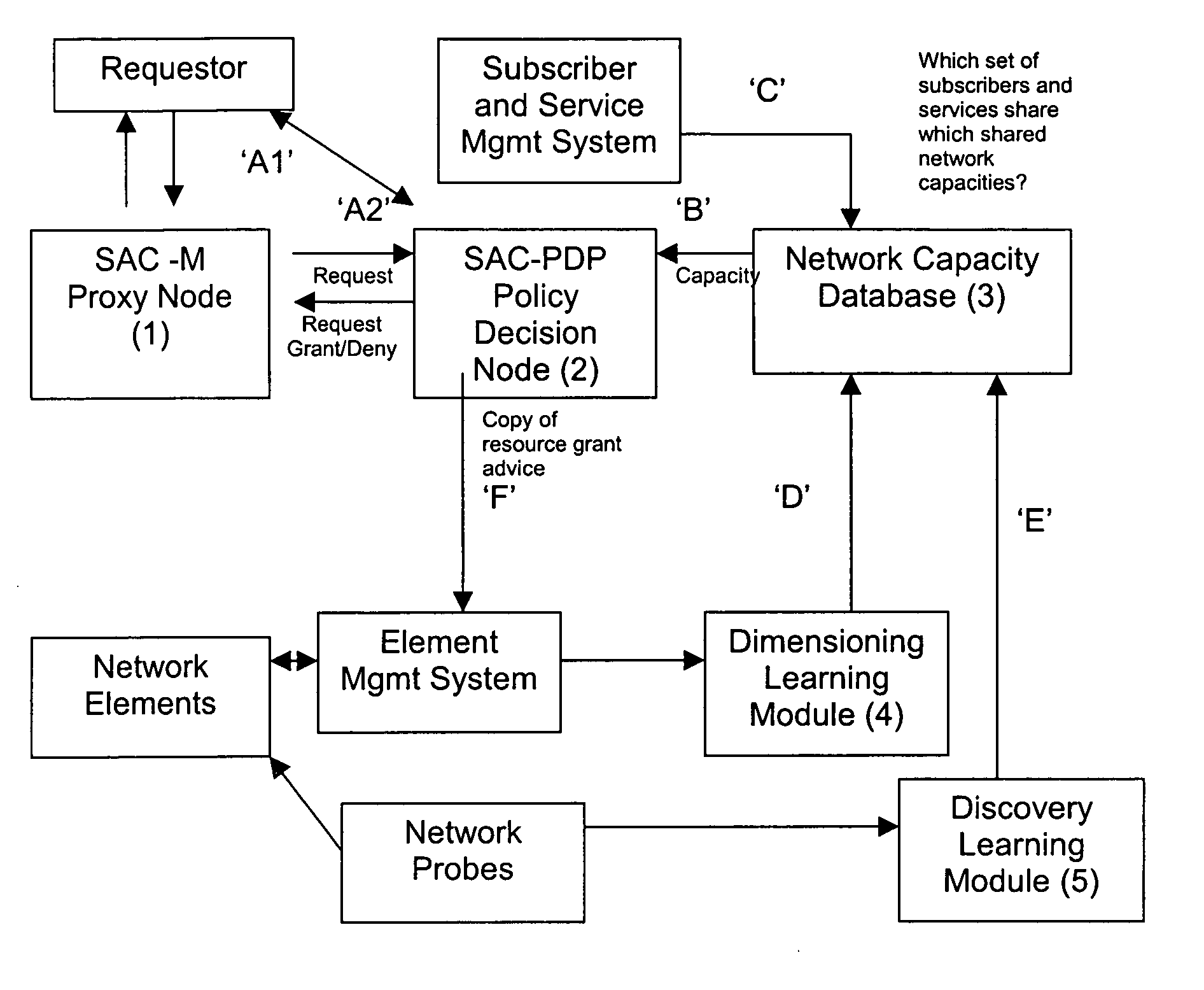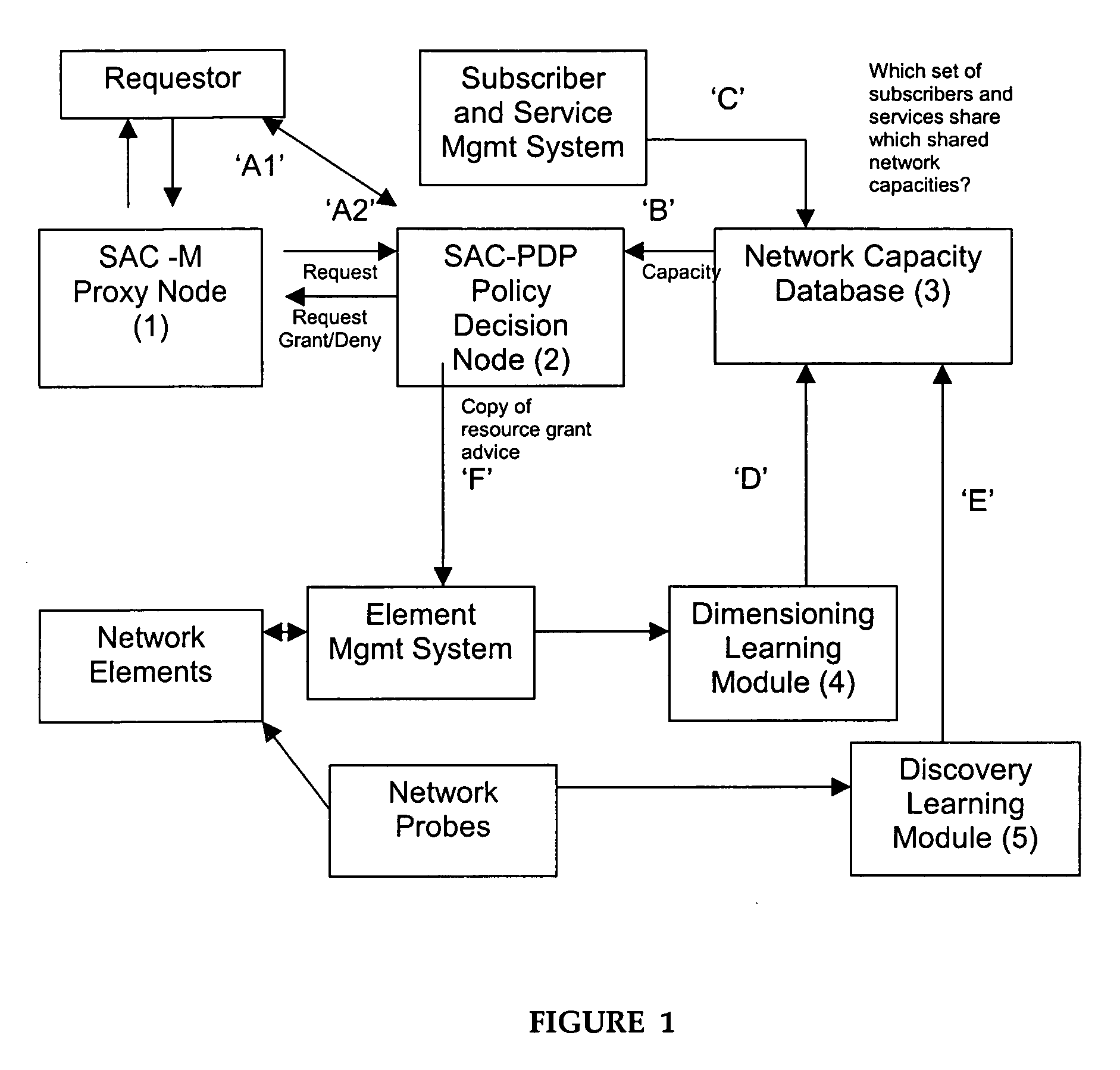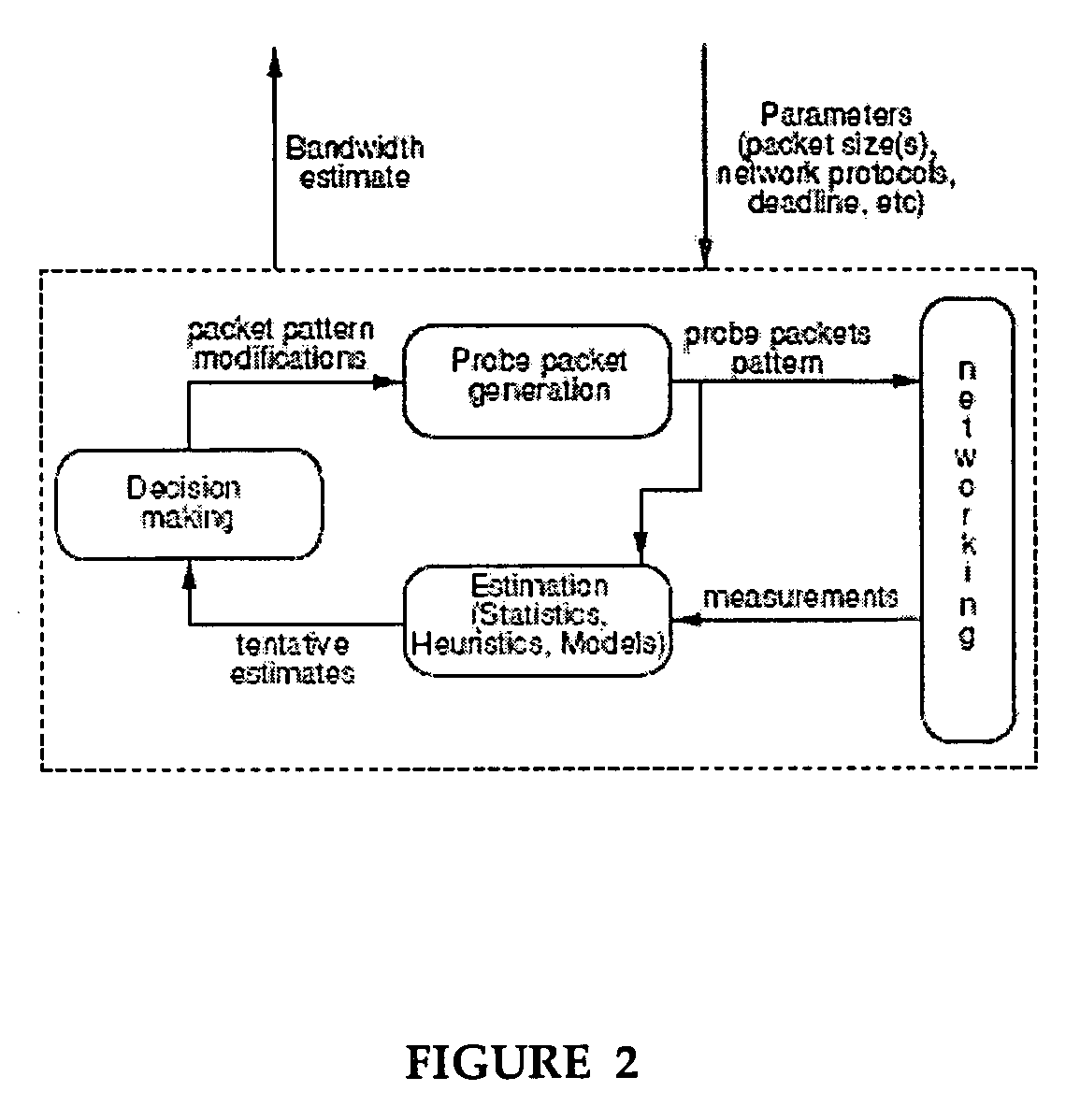Multi-service session admission control
a multi-service, broadband technology, applied in the field of multi-service session admission control, can solve the problems of unusable service, or unacceptable, and realtime communication over ip (such as voice over ip or voip) is relatively sensitive to delay and packet loss, multicast tv and video on demand is sensitive to average throughput and packet loss, and achieves the effect of overcompensating sac scaling problems
- Summary
- Abstract
- Description
- Claims
- Application Information
AI Technical Summary
Benefits of technology
Problems solved by technology
Method used
Image
Examples
Embodiment Construction
[0061]FIG. 1 illustrates specific components of the session admission control system. These include: [0062] a SAC-M admission proxy node 1 (This could be an external SAC-M, or an application incorporating SAC-M functionality); [0063] SAC policy decision node 2; [0064] network capacity database 3; [0065] dimensioning learning function 4; [0066] discovery learning function 5; and [0067] an interface ‘A’, designated by Interfaces ‘A1’ and ‘A2’
[0068] The ‘A’ interface is located between an application / service requesting admission and the SAC-M node 1 or SAC-PDP policy decision node 2 which grants or denies that request. The protocol for this interface is optionally based on SIP (Session Initiation Protocol) and uses extensions to its syntax for communication; web services or other protocols may serve the same function.
[0069] There are two communicating entities, the requester, and the SAC node (1 or 2). A requestor may request a session where it is not itself involved in the communicat...
PUM
 Login to View More
Login to View More Abstract
Description
Claims
Application Information
 Login to View More
Login to View More - R&D
- Intellectual Property
- Life Sciences
- Materials
- Tech Scout
- Unparalleled Data Quality
- Higher Quality Content
- 60% Fewer Hallucinations
Browse by: Latest US Patents, China's latest patents, Technical Efficacy Thesaurus, Application Domain, Technology Topic, Popular Technical Reports.
© 2025 PatSnap. All rights reserved.Legal|Privacy policy|Modern Slavery Act Transparency Statement|Sitemap|About US| Contact US: help@patsnap.com



